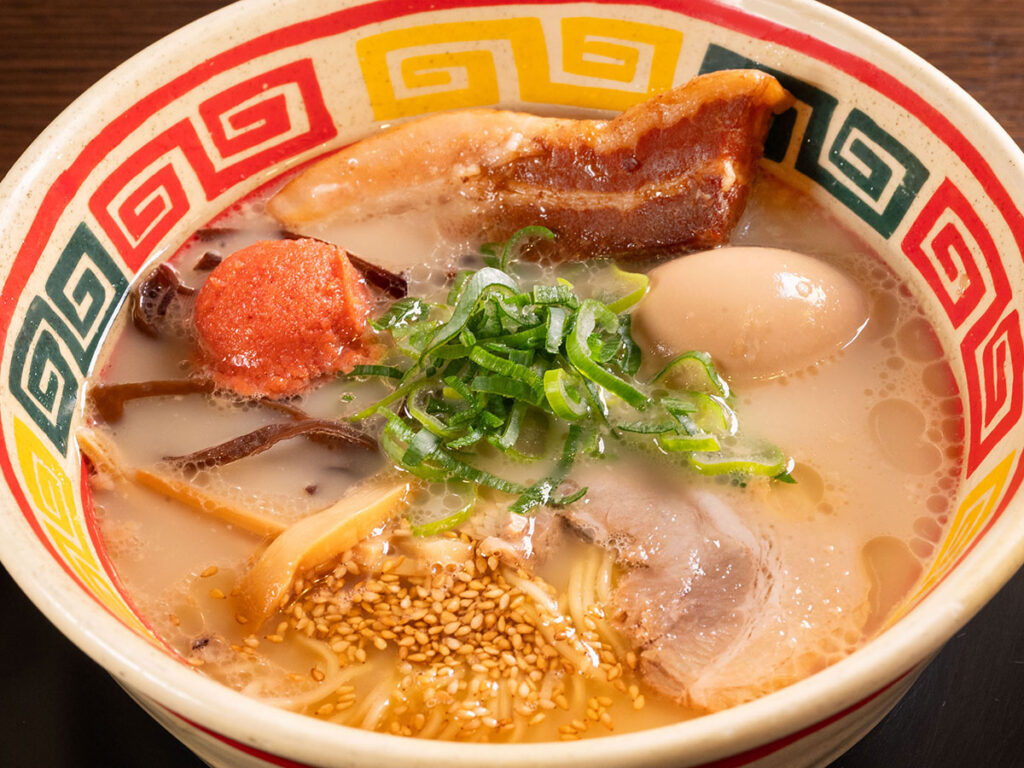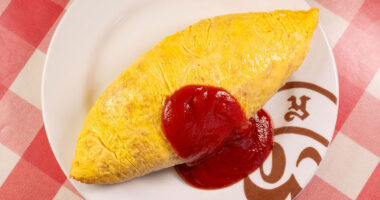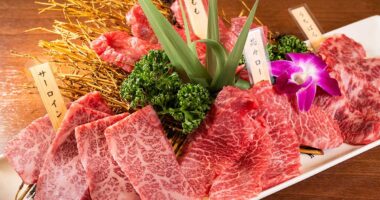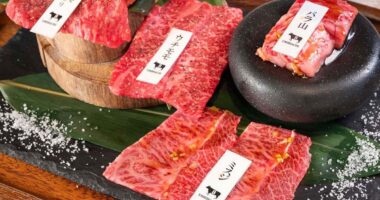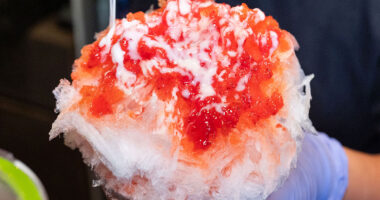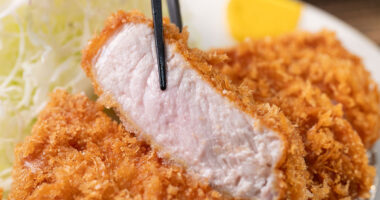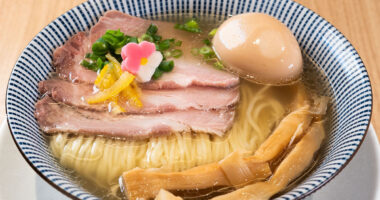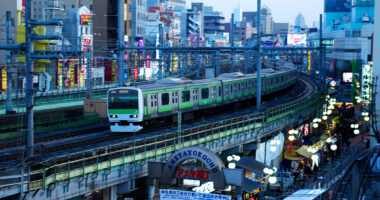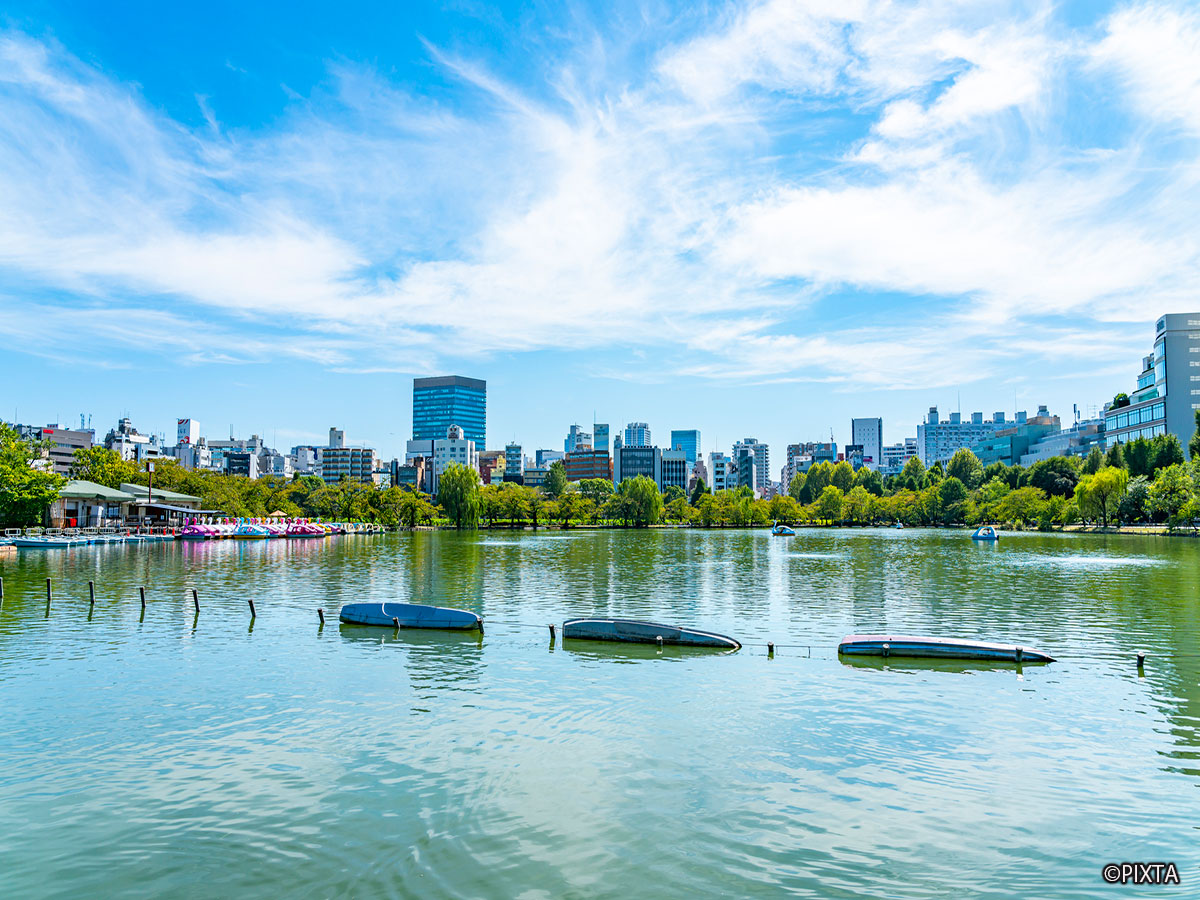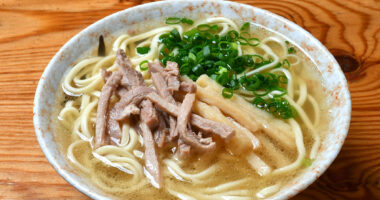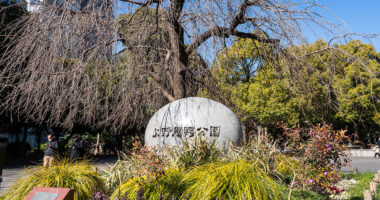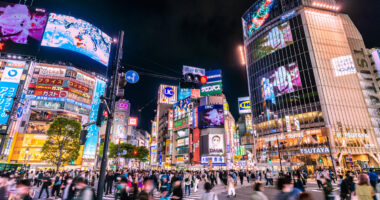Tonkotsu, made from pork bone, is a classic ramen soup known for its milky white color and creamy texture.
Tonkotsu soup is commonly used in the Kyūshū region, the southwesternmost of Japan’s main islands. However, it’s enjoyed all throughout Japan and has an enduring popularity.
Located right inside Ueno Station, “Tokyo Jangara ecute Ueno” (hereafter referred to as “Tokyo Jangara”), is a popular restaurant where you can enjoy a bowl of tonkotsu ramen, a specialty from the Kyushu region, which has been creatively adapted through experimentation and tweaking.
Thanks to its excellent accessibility, the restaurant attracts customers throughout the day, from opening to closing.
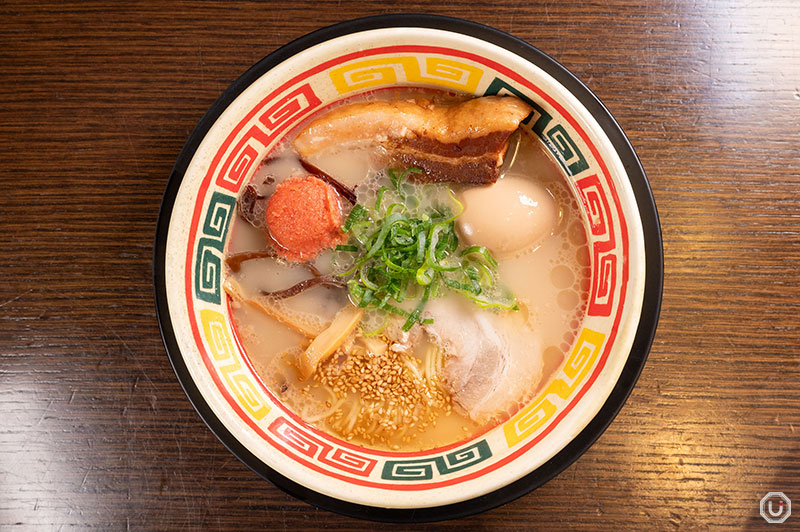
“東京とんこつじゃんがら 全部入り,” Tokyo Tonkotsu Jangara with Everything 1,400 JPY (tax included)
Tokyo Jangara has plenty of unique ramen toppings
JR Ueno Station is an area where many international visitors gather, so many considerations are made to ensure that tourists from abroad aren’t inconvenienced.
At Tokyo Jangara, a touch panel ticket machine has been introduced. With photos of dishes displayed on the screen, customers won’t have trouble choosing from the menu!
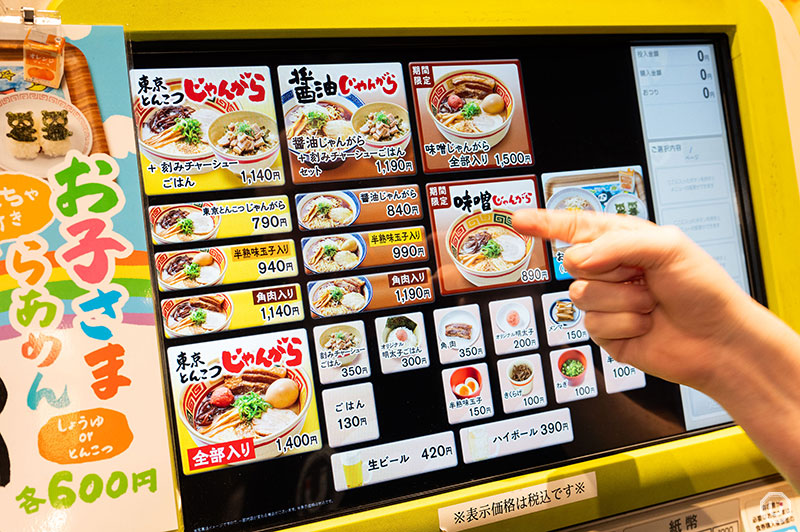
When visiting the restaurant, be sure to order the “Tokyo Tonkotsu Jangara”, which features tonkotsu soup. It’s Tokyo Jangara’s signature dish.
The price varies depending on the toppings you select. For the purpose of our visit, we ordered the “Tokyo Tonkotsu Jangara with Everything!”
This bowl of ramen features 7 types of toppings, ranging from classic ramen toppings to those unique to Tokyo Jangara.
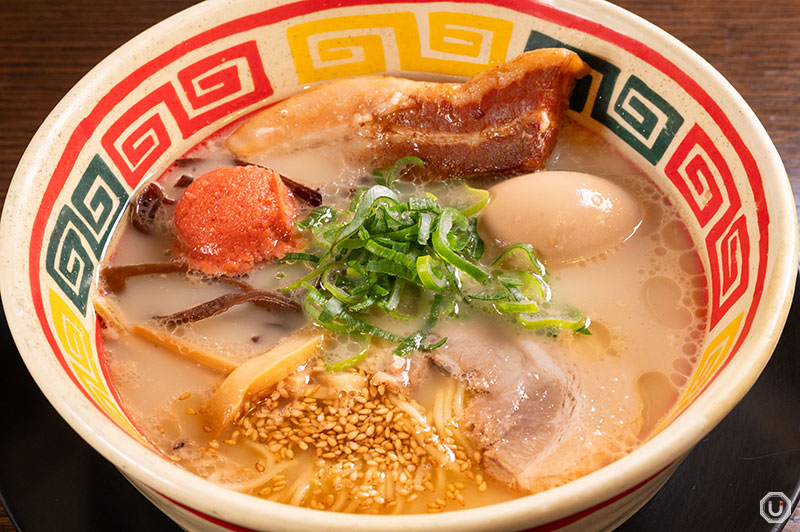
Toppings for the Tokyo Tonkotsu Jangara with Everything include a half-boiled seasoned egg, original mentaiko (spicy cod roe), kakuninku pork loin, pork belly chāshū, bamboo shoots, wood ear mushrooms, and green onions
The topping with the most standout presence is certainly the sweet kakuniku, thick chunks of simmered pork loin.
Simmered using a secret recipe, this meat is so tender it practically melts in your mouth when you bite into it.
Picking it up with chopsticks, you’ll notice its nice hefty weight, and the satisfaction from eating it is top-notch.
It pairs exquisitely with the rich soup of the Tokyo Tonkotsu Jangara!
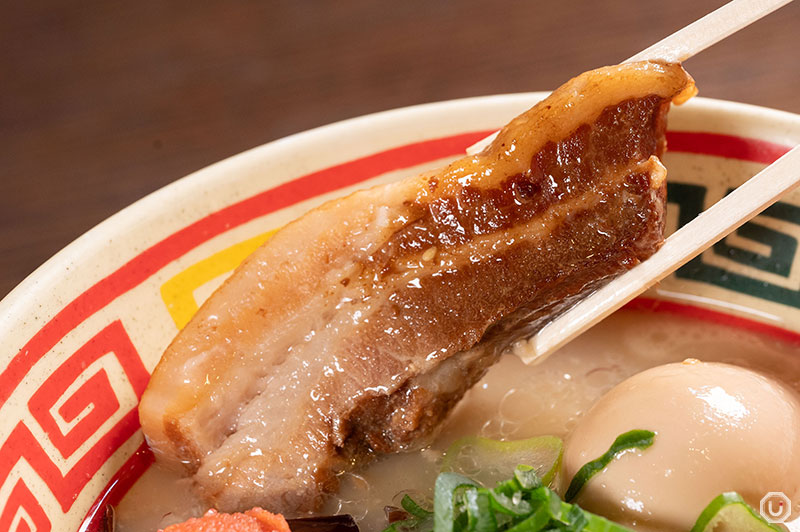
Kakuniku pork loin
The mentaiko (spicy cod roe) adds a nice kick, perfect for enjoying a change in flavor midway through your meal.
After trying the Tokyo Tonkotsu Jangara as is, try mixing the spicy cod roe into the soup to completely change the flavor profile.
In addition to blending it into the soup, you can also try serving it alongside the kakuni, spreading it on the seasoned eggs, or any other variations you like!
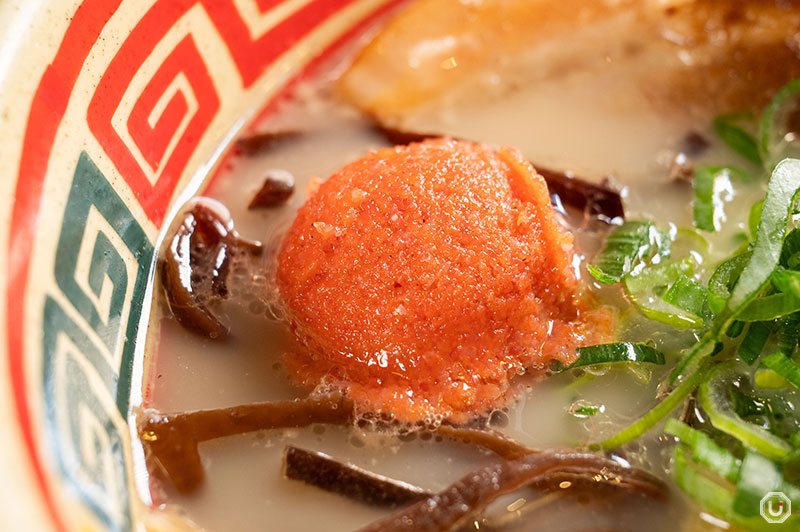
Original spicy code roe
The special craft behind Tokyo Jangara’s tonkotsu soup
Tokyo Jangara pays special care and meticulous attention to their soup, which is considered the soul of ramen.
The appeal of tonkotsu soup, made from boiling pork bones, is its particularly strong richness. At Tokyo Jangara, chicken bones and several kinds of vegetables are also simmered together, resulting in a soup that is rich yet pleasantly light.
The combination of ingredients gives the soup a concentrated umami, which will keep your spoon busy as you slurp away.
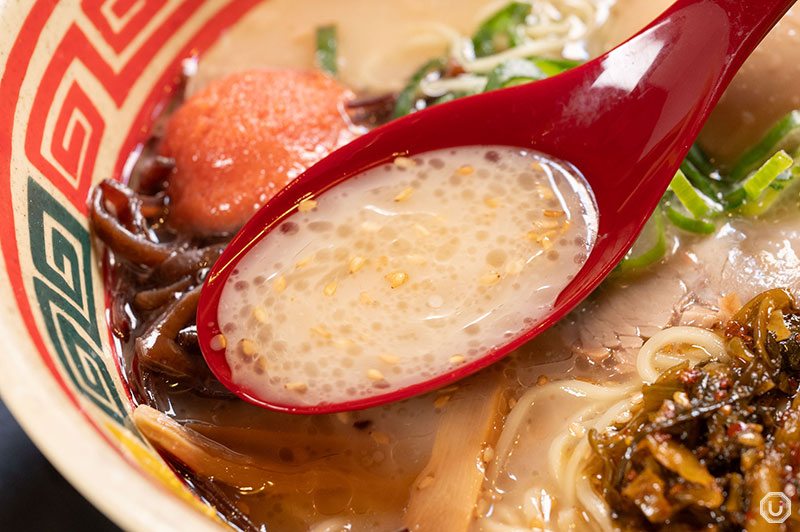
The thin noodles that accompany the soup are made from carefully selected wheat and mineral-rich natural sea salt.
Another key point is that the hardness of the noodles is adjusted with egg whites to give them a firm texture.
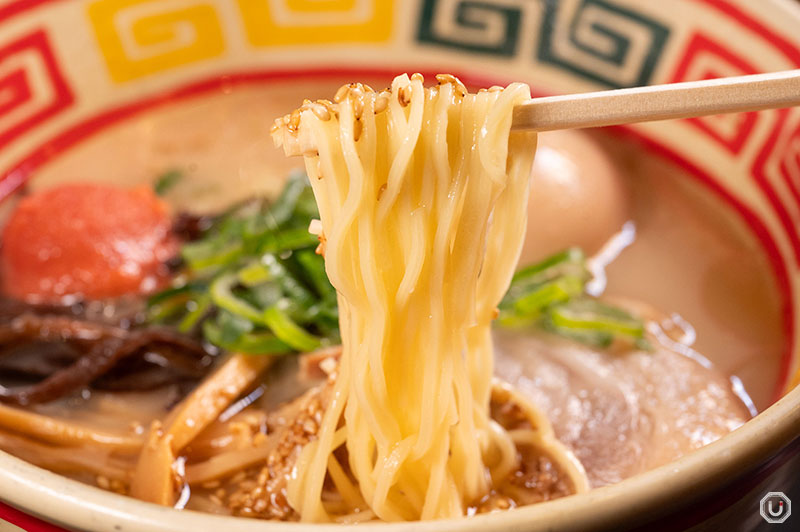
If you want to fully enjoy their texture and flavor, it’s recommended to order an extra serving of noodles, known as “kaedama” in the ramen world.
There are six levels of firmness, ranging from softest to hardest: “yawa” (soft), “futsū” (normal), “kata” (firm), “barikata” (very firm), “harigane” (extra firm), and “konaotoshi” (extremely firm).
The softest type is yawa, while the hardest is konaotoshi.
The harder the noodles are, the less time it takes to boil them, allowing you to experience the texture and flavor more directly.
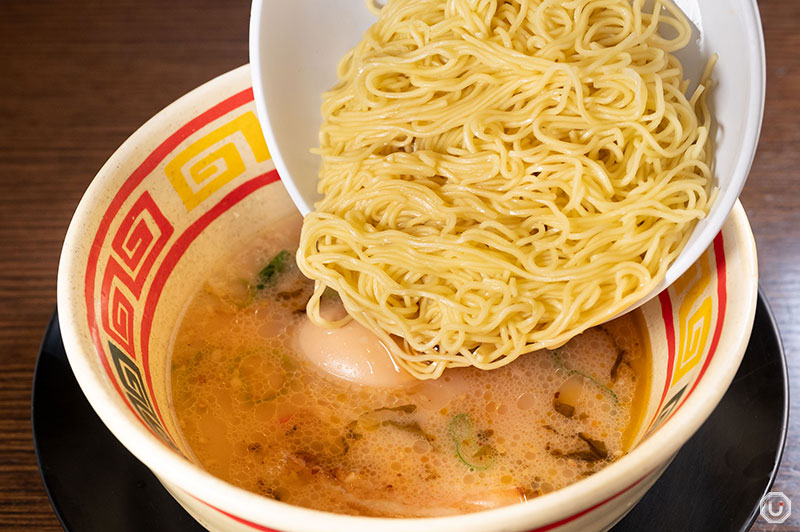
“替え玉,” Kaedama 150 JPY (tax included)
Before adding your extra serving of noodles into the bowl, don’t forget to pour on the “Kaedama Sauce,” located tableside.
Since the sauce has some tartness, pouring too much can spoil the taste of the soup, so just a drizzle is enough.
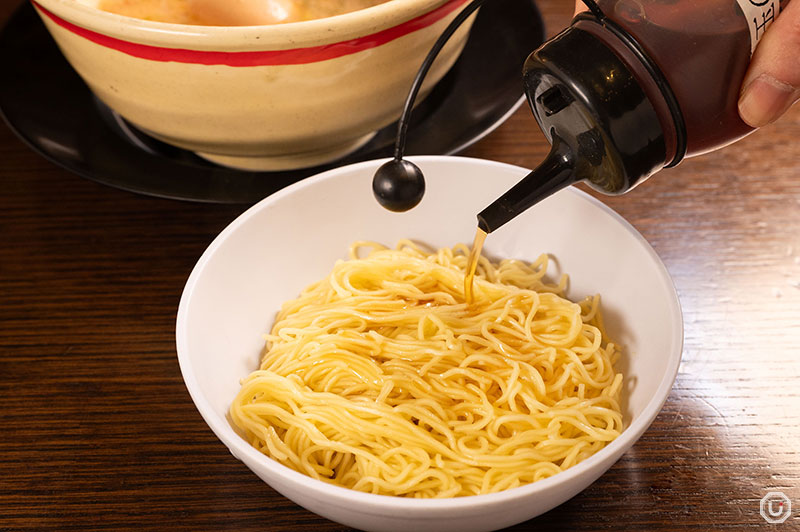
Also, after you’ve added the extra serving of noodles, it’s a good idea to customize them with the provided red pickled ginger, hot mustard greens, and sesame seeds provided at your table.
Pickled ginger and spicy mustard greens are classic toppings commonly found in ramen shops throughout Kyushu.
Their tartness and spiciness can really change up the mild flavor of the soup at Tokyo Jangara.
However, be careful not too add too much!
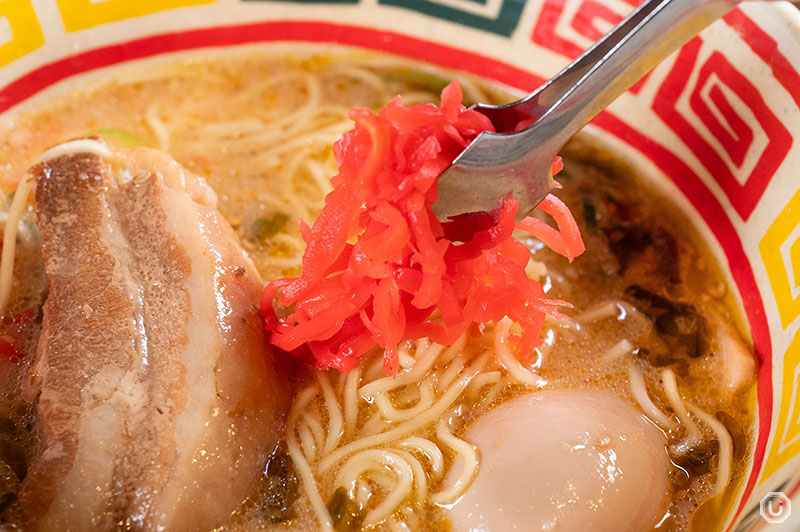
Complimentary red pickled ginger for topping
Tokyo Jangara’s original “Shoyu Jangara”
Tokyo Jangara is a new concept born from a collaboration between the original “Kyushu Jangara,” its home store in Akihabara, and JR East Japan Cross Station Corporation.
While the Tokyo Tonkotsu Jangara uses the same soup and sauce used as Kyushu Jangara, there is one particular bowl that can only be enjoyed at Tokyo Jangara.
That’s the “Shoyu Jangara,” a soy sauce-based ramen that uses kanro shōyu, a particularly sweet soy sauce, in its soup.
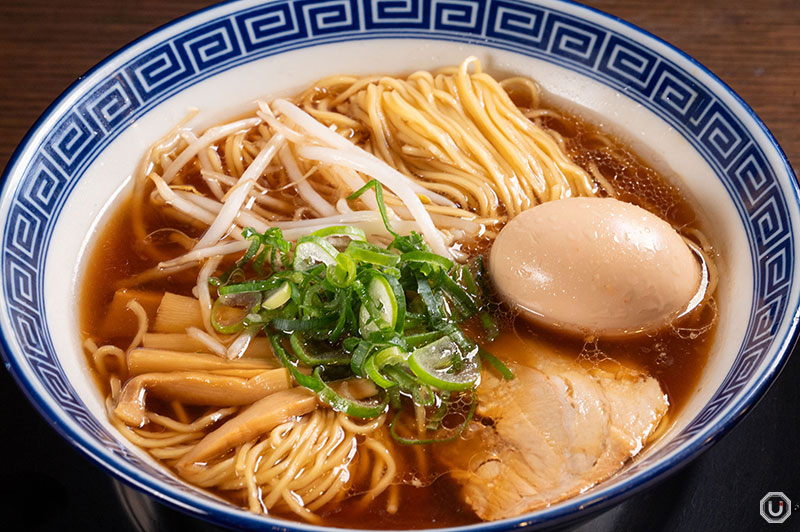
“醤油じゃんがら 半熟味玉子入り,” Shoyu Jangara with Half-boiled seasoned egg 990 JPY (tax included)
In fact, this soup is this ramen’s standout feature.
Enhanced by a subtle saltiness, it offers a flavor profile that is rich in depth and umami.
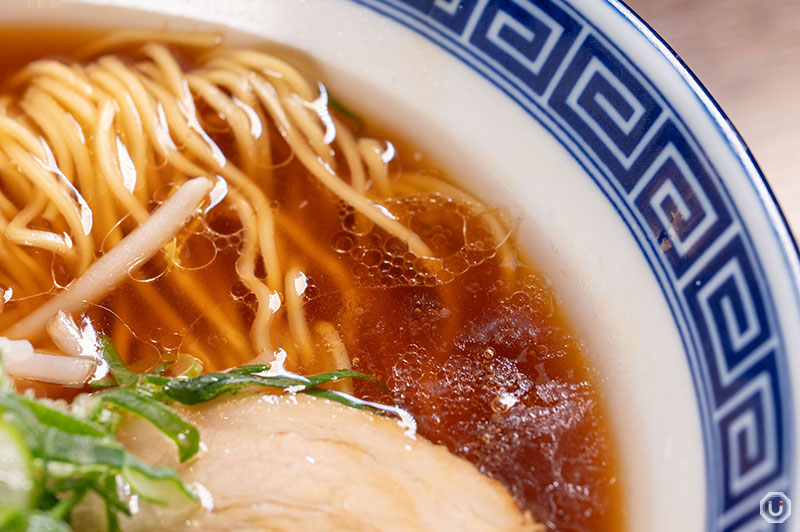
Kanro shoyu, with its sweet taste, is a type of soy sauce commonly found in the Kyushu region.
It’s a soy sauce ramen that truly reflects the Kyushu roots of Tokyo Jangara!
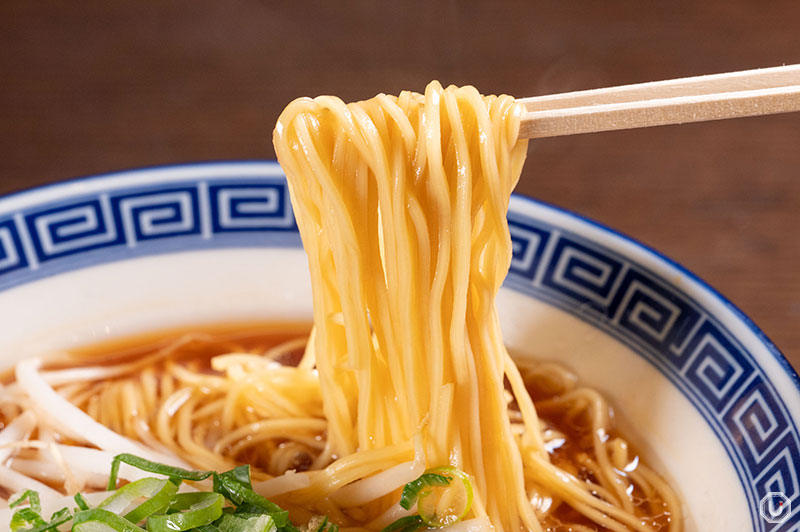
Once you give Tokyo Jangara a try you’ll be hooked
While incorporating the special characteristics of the Kyushu region into their toppings and soup ingredients, both Tokyo Jangara and Kyushu Jangara have expanded their stores primarily in Tokyo.
Underlying this expansion is their strong association and dedication to the Tokyo way of living.
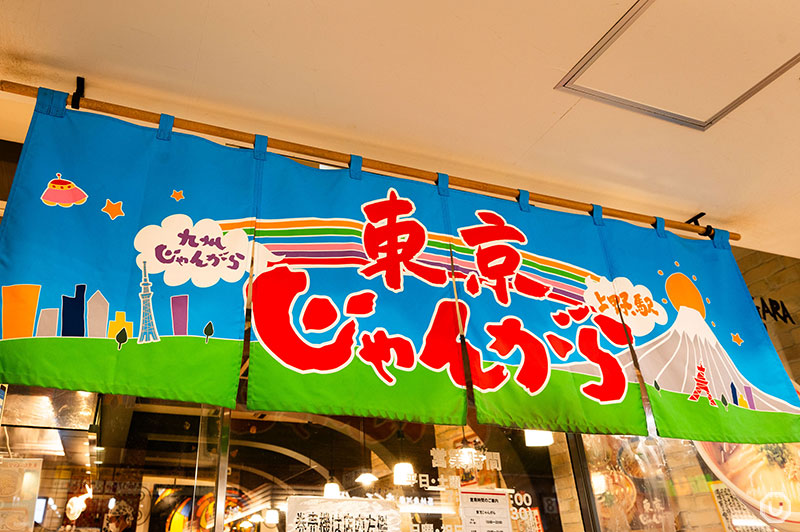
Tokyo Jangara’s exterior
Furthermore, they have pursued the goal of creating ramen that can be enjoyed daily, resulting in a broth that is light yet flavorful, suitable for all types of people.
Because it’s a taste that has been born through trial and error in order to satisfy such a wide range of people, Tokyo Jangara is filled with charm that makes you want to visit again once you’ve been there.
Information
| Store name | 東京じゃんがら エキュート上野店 Tokyo Jangara ecute Ueno |
|---|---|
| Address | ecute Ueno (inside ticket gates), 3F, JR Ueno Station, 7-1-1 Ueno, Taito-ku, Tokyo
|
| Access |
Ueno Station(UEN) Within Ueno Station
|
| Phone number | 03-5826-5619 |
| Reservations | Not accepted |
| Payment |
|
| Service charge/Table charge | None |
| Hours | Mon-Fri. 10:00-22:00(last order 21:45) Sat-Sun. & nat’l holidays 10:00-21:00(last order 20:45) |
| Closed | No holidays excluding ecute Ueno holidays |
| Seating | 33 seats 9 counter seats, 24 table seats |
| Smoking | All seats are non-smoking |
| Official website | https://www.jr-cross.co.jp/ |
| Other information |
|
※Menu contents, prices, store information, etc. are current as of March 2024.
